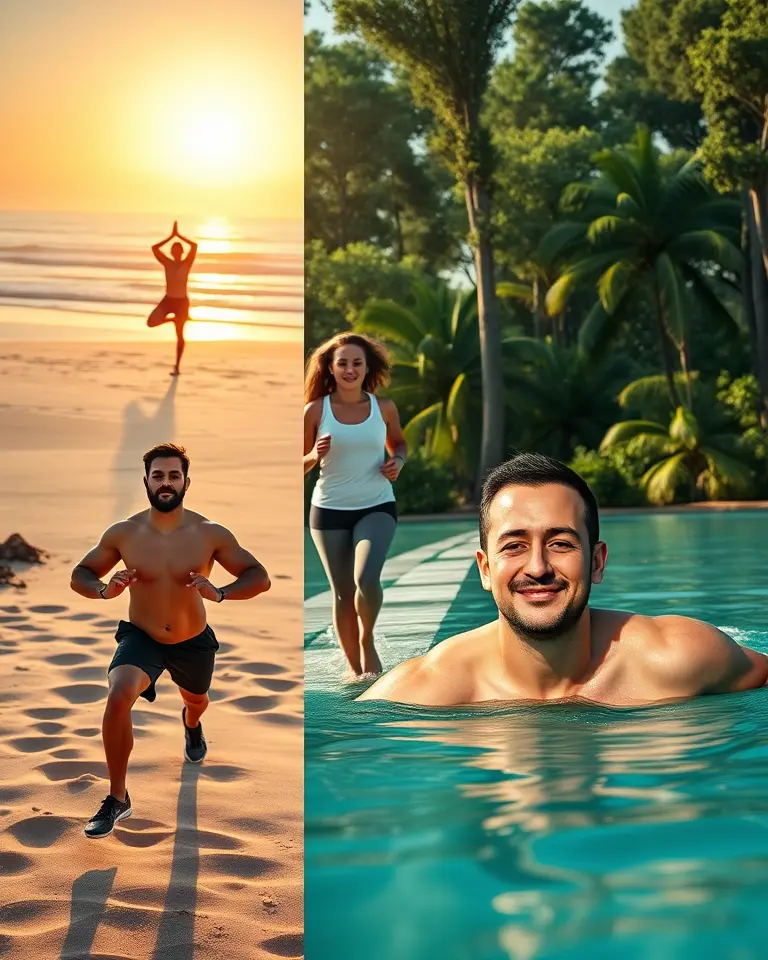For many, fitness is synonymous with structured gym sessions, a far cry from how our ancestors viewed physical activity. But are we missing a crucial element by isolating exercise from our daily lives? Around the globe, cultures have integrated movement into their routines for centuries, providing valuable insights into a more holistic approach to well-being. Experts suggest we may have much to learn from these diverse perspectives.
Integrating Movement into Daily Life
In many parts of the world, physical activity isn’t a separate task but rather an interwoven aspect of daily life. Instead of driving to a gym, people walk, cycle, or use other active forms of transportation for commuting and errands. This approach combats sedentary behavior and seamlessly integrates exercise into the day-to-day. This contrasts with the more siloed approach to fitness prevalent in many Western societies, where exercise is often a scheduled activity separated from other aspects of life.
Finland: Embracing the Outdoors, No Matter the Weather
Finland’s approach to fitness highlights the importance of consistency and resilience. In a country where daylight hours are scarce during winter, Finns have embraced the outdoors as an integral part of their lives. As Professor Mika Venojärvi, of the University of Eastern Finland, notes, they have a “no bad weather, only bad clothes” mentality. Walking is a common form of transportation, and Nordic walking, using specialized poles, is a popular activity, encouraging outdoor engagement throughout the year. This shows the potential to transform commutes into fitness opportunities.
The Power of Community in Fitness
Beyond individual activity, many cultures emphasize the importance of community in fitness. Group activities not only provide physical benefits but also create a sense of belonging and motivation.
India: Ancient Wisdom for Modern Fitness
India’s fitness traditions, rooted in Ayurveda and yoga, emphasize the interconnectedness of mind, body, and spirit. Ayurveda focuses on personalized approaches to health, categorizing individuals into different doshas and recommending specific dietary and lifestyle adjustments for each type. Yoga, with its various styles such as Hatha, Vinyasa, and Ashtanga, promotes flexibility, strength, and mental clarity. These practices are often performed in groups, fostering a sense of unity and shared purpose, with practices like Pranayama also contributing to mental well-being. This integrated approach highlights the benefits of aligning physical activity with a holistic view of well-being.
Mindful Movement and Body Awareness
In contrast to the often-rushed nature of modern workouts, some cultures focus on the quality of movement, emphasizing a mindful connection between mind and body. Mindfulness in fitness enhances body awareness, improves focus, and reduces stress.
Global Awareness: The Rise of Mindful Fitness
Practices such as mindful movement involve paying attention to the body’s sensations, muscle contractions, and breathing during exercise. This approach leads to increased body awareness, improved focus, and enhanced performance. Mindfulness helps people tune into their bodies, identify areas of tension, and adjust their workouts accordingly, maximizing benefits and reducing injury risks. This also extends to mindful eating habits, which contribute to overall well-being. Mindfulness practices such as meditation and body awareness techniques synchronize mental and physical efforts, optimizing movements.
Fitness as a Form of Self-Expression and Joy
Instead of viewing fitness as a chore, some cultures embrace it as a form of self-expression, creativity, and joy.
Brazil: The Rhythmic Cardio of Capoeira
In Brazil, the martial art of Capoeira is more than self-defense; it’s a dynamic form of cardio. This blend of martial arts, acrobatics, and dance is a high-energy activity that engages both body and mind. It demonstrates the potential to fuse cultural traditions with fitness, making workouts more engaging and enjoyable. Other traditions, like Bollywood dance workouts in India, also show how cultural practices can be translated into fun and effective fitness methods.
Key Takeaways
The global fitness landscape is evolving, with growing emphasis on wearable technology, online platforms, and personalized wellness solutions. However, these four lessons from around the world offer a timeless perspective on how we can approach fitness:
- Integrate movement: Make physical activity a seamless part of your daily routine rather than a separate task.
- Embrace community: Find opportunities to exercise with others, fostering a sense of belonging and mutual support.
- Practice mindfulness: Focus on the quality of your movements, paying attention to your body’s signals and enhancing the mind-body connection.
- Find Joy: Explore activities that you enjoy and see fitness as a form of self-expression.
By learning from these diverse global approaches, we can move towards a more holistic and sustainable vision of fitness, one that is integrated, community-oriented, mindful, and enjoyable. The world offers many different paths to well-being – it’s time we explore them.







